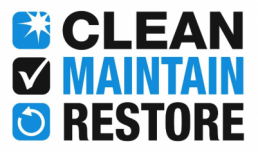Nearly every time you look at a TV commercial for a cleaning product, it will claim to remove 99.9% of all bacteria or germs.
Why can’t cleaning products kill all bacteria?
And the answer is – the maths (or math, if you live in North America) and for once, the advertising is reasonably accurate.
Most people think that killing bacteria is an all-or-nothing scenario. If you apply a sanitiser, it will kill everything it touches.
This is not exactly true. When you ‘kill’ bacteria, you are actually reducing their numbers in a logarithmic way. If you a maths geek, it’s log base 10.
What does 99.9% actually mean?
To put this in simple way, the cleaning product will kill 90% of all the bacteria present.
It will then kill 90% of the remaining bacteria and then another 90% of the new level and so on and so on………
So, if the cleaning product keeps reducing the bacterial level by 90%, it is always leaving behind 10%.
So if you keep following this theory, then you can never kill all of the bacteria as there is always some that survive each level of reduction.
How often the cleaning product cycles though this 90% reduction depends on a range of things.
But at the end of it, according to the maths, you will never have 100% of the bacteria killed.
So the advertisers claim that “99.9% of all bacteria is removed”, it simply means that it has enough strength or activity to go through three cycles – first gets the 90%, the next gets the 9% and the last gets the 0.9% giving a total of 99.9%
So, where’s the catch?
The real question you should ask is not how many bugs are killed, but which bugs are killed.
You see, in a laboratory, any sort of bacteria can be grown.
So, lets say a manufacturer of a new cleaning product wants their whizz bang spray to get it’s 99.9% number.
What is stopping them from testing it against some bacteria that don’t cause any problems or some ‘weak’ bacteria?
The answer is……….nothing really. All the adverts I’ve seen just yell about 99.9%.
They don’t normally say 99.9% of pathogenic bacteria (pathogenic – disease causing) or 99.9% of Salmonella.
So as long as the claim on the label can be backed up by some properly conducted laboratory tests, then they are in the clear.
The end result is – you don’t really know what your kitchen spray is actually killing.
PS – for all the maths geeks out there, I know that using percentages to describe logarithmic functions is a bit wrong. This is not a maths website, it’s about cleaning.

